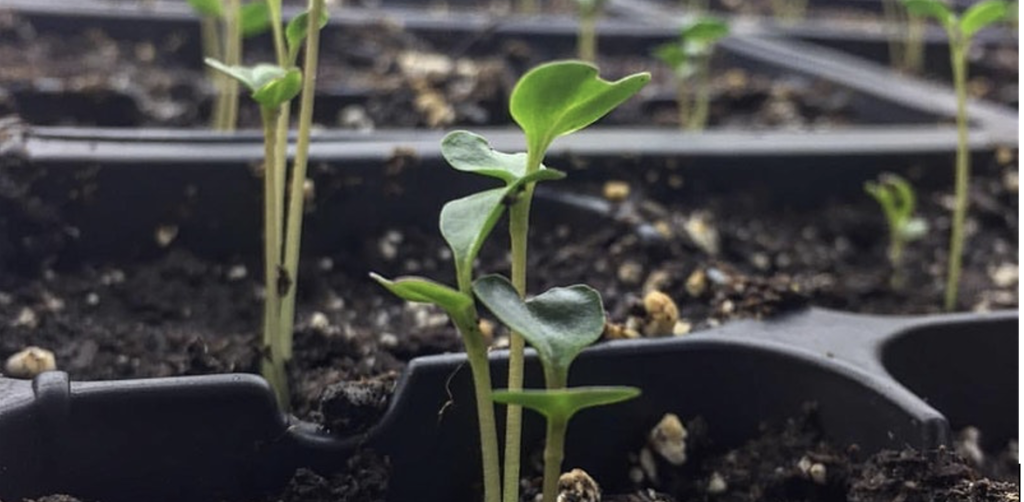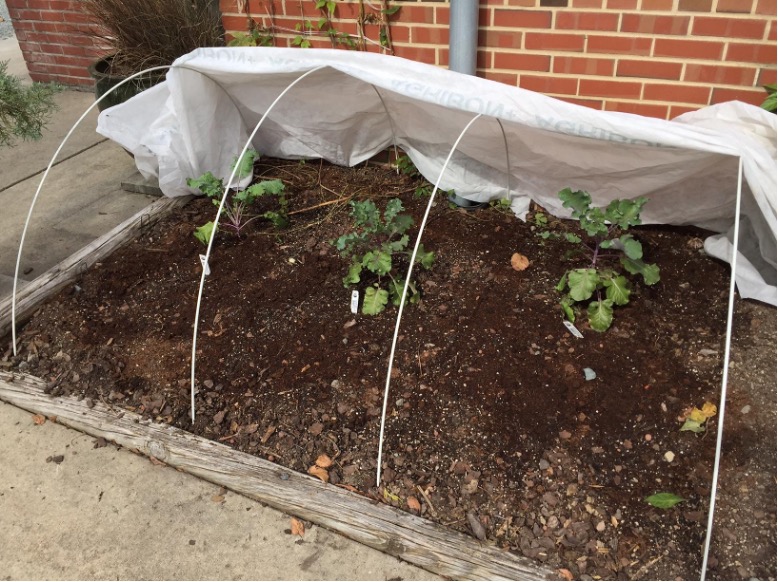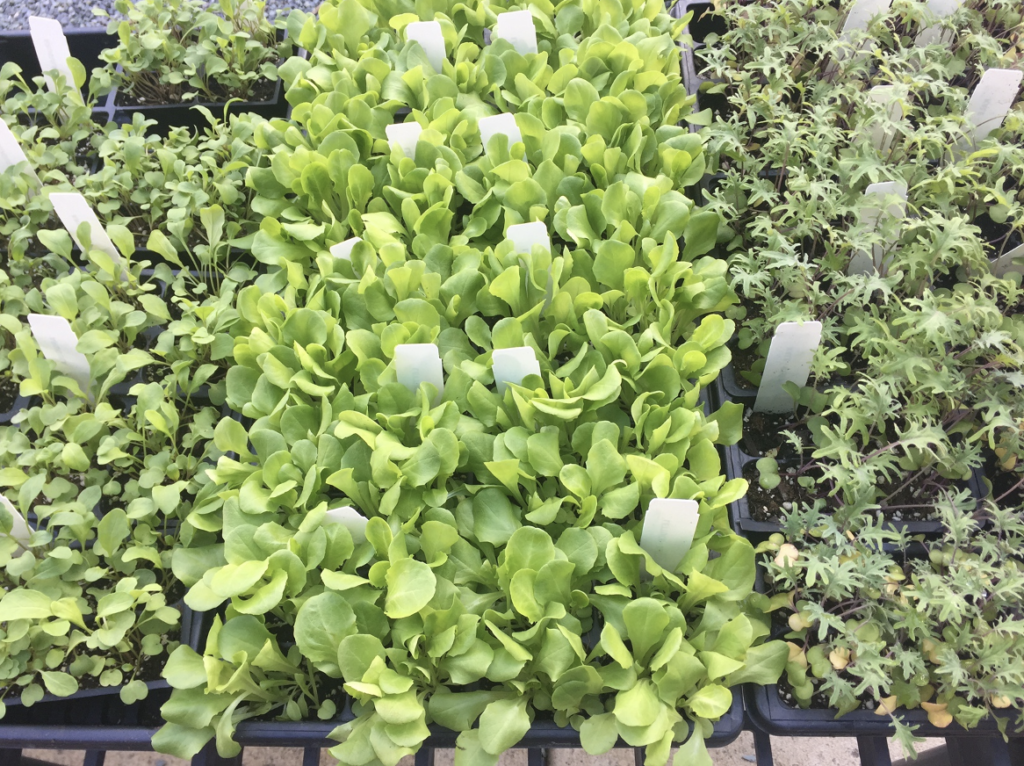-Pam Scott-
 It’s February 1st, and I am marveling at the insulating, nitrogen-rich blanket of snow covering my garden. Today I will be making my way out to the yard to take cuttings of quince and forsythia. They will be taken indoors and put into vases of warm water where they will be forced into bloom, filling the house with the colors and scents of spring. This is a yearly tradition for me to welcome in the beginning of “Gardeners Spring”. This is also the date when we at Fifth Season Gardening sow the first of our spring vegetable seedlings.
It’s February 1st, and I am marveling at the insulating, nitrogen-rich blanket of snow covering my garden. Today I will be making my way out to the yard to take cuttings of quince and forsythia. They will be taken indoors and put into vases of warm water where they will be forced into bloom, filling the house with the colors and scents of spring. This is a yearly tradition for me to welcome in the beginning of “Gardeners Spring”. This is also the date when we at Fifth Season Gardening sow the first of our spring vegetable seedlings.
There are many good reasons to start seeds indoors early in the season. When you start your indoor seedlings in late winter you can get a jump on the spring season, giving them more light than is available outdoors, as well as protecting vulnerable plants from inclement weather and hungry animals. Some seedlings such as peppers, Roselle hibiscus, woody herbs, petunias and impatiens, take a long time to germinate. I like to put fairly mature pepper plants, started in February, into the ground in May. They take a long time for their fruit to turn red. Peppers started too late may not have mature fruit before the weather turns cold in the fall.
 If you like to plant large quantities of bedding plants, herbs or vegetables, starting your own seeds is more economically feasible than buying individual plants. When you start your plants from seed you can find varieties that are not usually grown in most garden centers. Whatever your reasons, it’s always super fun to watch your seeds as they germinate and grow.
If you like to plant large quantities of bedding plants, herbs or vegetables, starting your own seeds is more economically feasible than buying individual plants. When you start your plants from seed you can find varieties that are not usually grown in most garden centers. Whatever your reasons, it’s always super fun to watch your seeds as they germinate and grow.
Planting your seeds at the appropriate time is crucial to having a successful, productive garden. I have been seeing, on social media, a lot of photos of zinnias, sunflowers, cosmos and other tender summer flowering plants that people have been starting indoors this winter. I envision their houses, by March being taken over by hundreds of huge leggy plants with still 2 months of growth to go before they can be put outside. Last February I had a friend bring me a large quantity of fully grown tomato plants that she started in December. She had hundreds of them that she was desperately trying to rehome. I can’t emphasize enough how important it is to read the back of your seed packs with the information about how many weeks from the planting date you should start your seeds.
For warm weather plants, such as tomatoes, peppers, and tender annual flowers and herbs, you should not plant outdoors until after the last frost date. Check with your local county extension service for your official last frost date. I have seen on many web sites and even gardening books that the last frost date for our zone 7 (Charlottesville, VA) is April 15. Our local Extension office says May 10. For the last 4 years we have had killing frosts up to and including May 10th. Tomatoes, peppers and tender annuals may be permanently damaged from exposure to temperatures under 55 degrees.
I want to scream it from the rooftops ”wait until after May 10th to plant your tomatoes, peppers and annual flowers in the ground!” Every year, the second week in May, we get people coming to the store to replace their plants that didn’t make it through the last frost.

You can put your cold crops in the ground: kales, cabbage, broccoli, kohlrabi, brussels sprouts, cauliflower, collards, leeks, lettuce and arugula in March or as soon as the ground is workable. With a little help from Agribon frost cover or cold frames you will have no problem.
There are a few seeds you can directly sow outdoors in February. Some poppy varieties, chamomile and larkspur need to have the cold winter weather in order to stimulate germination. Spinach seeds can be planted in February, as well, as long as the ground is not frozen solid. I have been very successful with planting Spinach seeds in late October, to winter over, filling in any gaps in February.
If you are planning on keeping your tender seedlings growing indoors from February until May, you will need to have adequate lighting and space. LED lights and possibly a reflective tent set up would be good for keeping your seedlings healthy and robust after they outgrow their seed tray stage. A leggy seedling is not a healthy seedling.
Before you start your seedlings check that you have all the equipment you will need, heat mats, seed starting lights, timers, labels and pens. Be sure to label your seedlings clearly and accurately. Always use a paint pen or a garden marker to label them. Most permanent markers will bleach out in the sun and you may be left with hundreds of “mystery” plants. Be sure to buy your seeds early as many varieties may sell out. Keep a journal of dates you start your seedlings, what varieties you planted, garden and bed plans, weather, crop rotations, successes and failures from year to year. I keep an easy reference section in my garden journal with recipes that are garden related such as hot sauces, canning recipes, compost teas, brines and recipes to make my own soils.

Here is a short list of some of the seedlings you may want to start in February to get a jump on the season.
- Mustards
- Broccoli
- Pak choi
- Cabbage
- Cauliflower
- Kohlrabi
- Brussels sprouts
- Arugula
- Lettuce
- Chard
- Celery
- Onions
- Leeks
- Collard
Seeds to direct sow outdoors
- Spinach
- Radish- end of month
- Peas-end of month
- Bread seed poppies
- Larkspur
- German chamomile
Seeds to start in February, plant in May
- Roselle hibiscus
- Petunias- heat mat
- Impatiens-heat mat
- Peppers-heat mat
- Tomatoes- end of month, heat mat
- Woody herbs- thyme, marjoram, sage, rosemary, lavender
- Asclepias
- Foxglove
- Echinacea
- Rudbeckia
Come down to Fifth Season Gardening and chat with our staff of experienced gardeners. We can set you up with seeds, lights, trays, seedlings and anything else you need to help make your gardening dreams a reality.

Leave a Reply